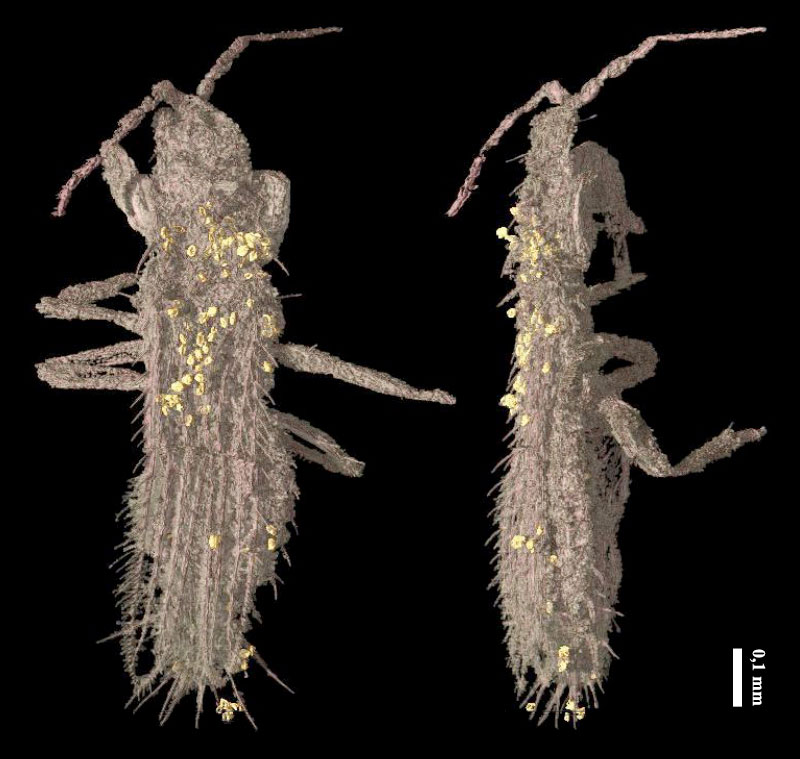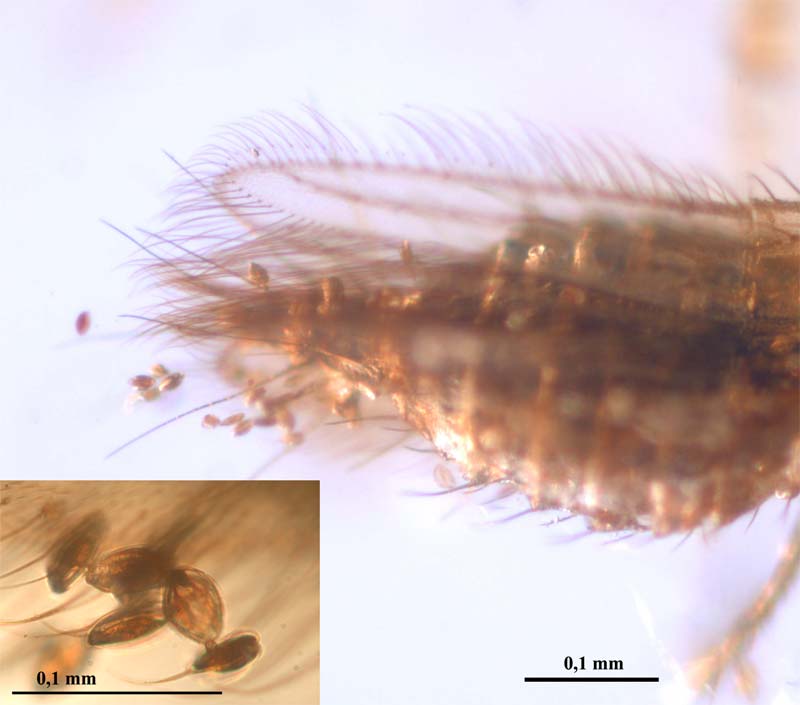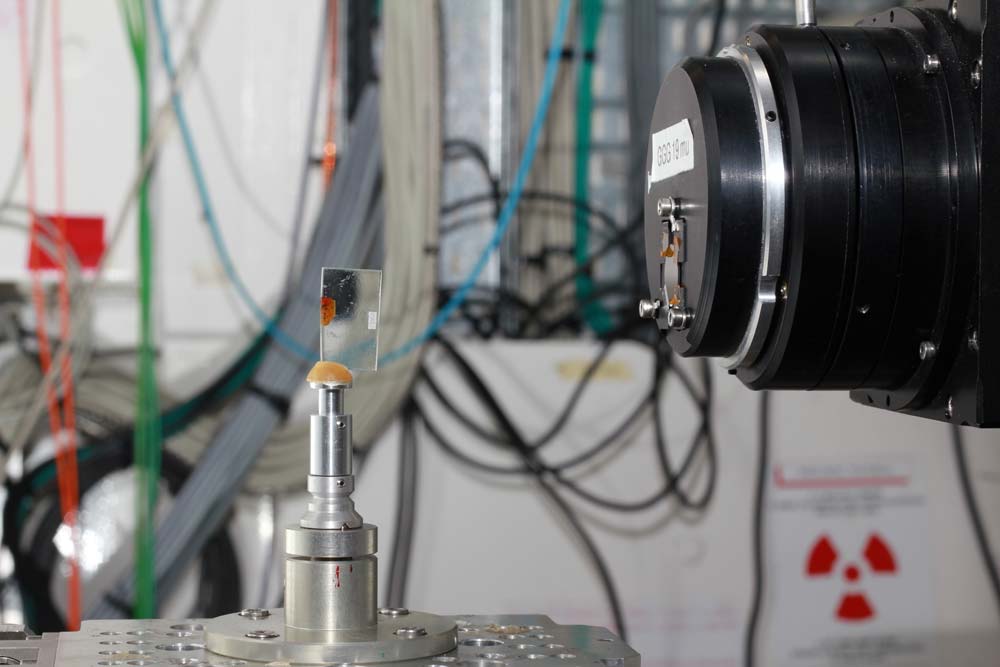Image Gallery: Tiny Insect Pollinators Trapped in Amber
Ancient Thrip in Action

Reconstruction of Gymnospollisthrips with pollen attached to the body over an ovulate organ of a gingko.
Ancient Pollinator

A synchrotron X-ray image of the specimen of Gymnospollisthrips minor, showing the pollen grains (yellow) covering its body.
Pollen Particles

This photo taken under a microscope reveals Gymnosperm pollen, attached to the abdomen and wing of a Gymnopollisthrips fossilized insect inclusion in amber.
I'm Trapped!

Trapped in amber, a specimen of Gymnospollisthrips maior with pollen grains attached to itsbody.
X-Ray Vision

The researchers used synchrotron X-ray tomography to get a close look at the thrip and attached pollen grains veiled by the amber. Shown here, an amber sample mounted in the microtomograph to be imaged.
Get the world’s most fascinating discoveries delivered straight to your inbox.
Jeanna Bryner is managing editor of Scientific American. Previously she was editor in chief of Live Science and, prior to that, an editor at Scholastic's Science World magazine. Bryner has an English degree from Salisbury University, a master's degree in biogeochemistry and environmental sciences from the University of Maryland and a graduate science journalism degree from New York University. She has worked as a biologist in Florida, where she monitored wetlands and did field surveys for endangered species, including the gorgeous Florida Scrub Jay. She also received an ocean sciences journalism fellowship from the Woods Hole Oceanographic Institution. She is a firm believer that science is for everyone and that just about everything can be viewed through the lens of science.
 Live Science Plus
Live Science Plus





